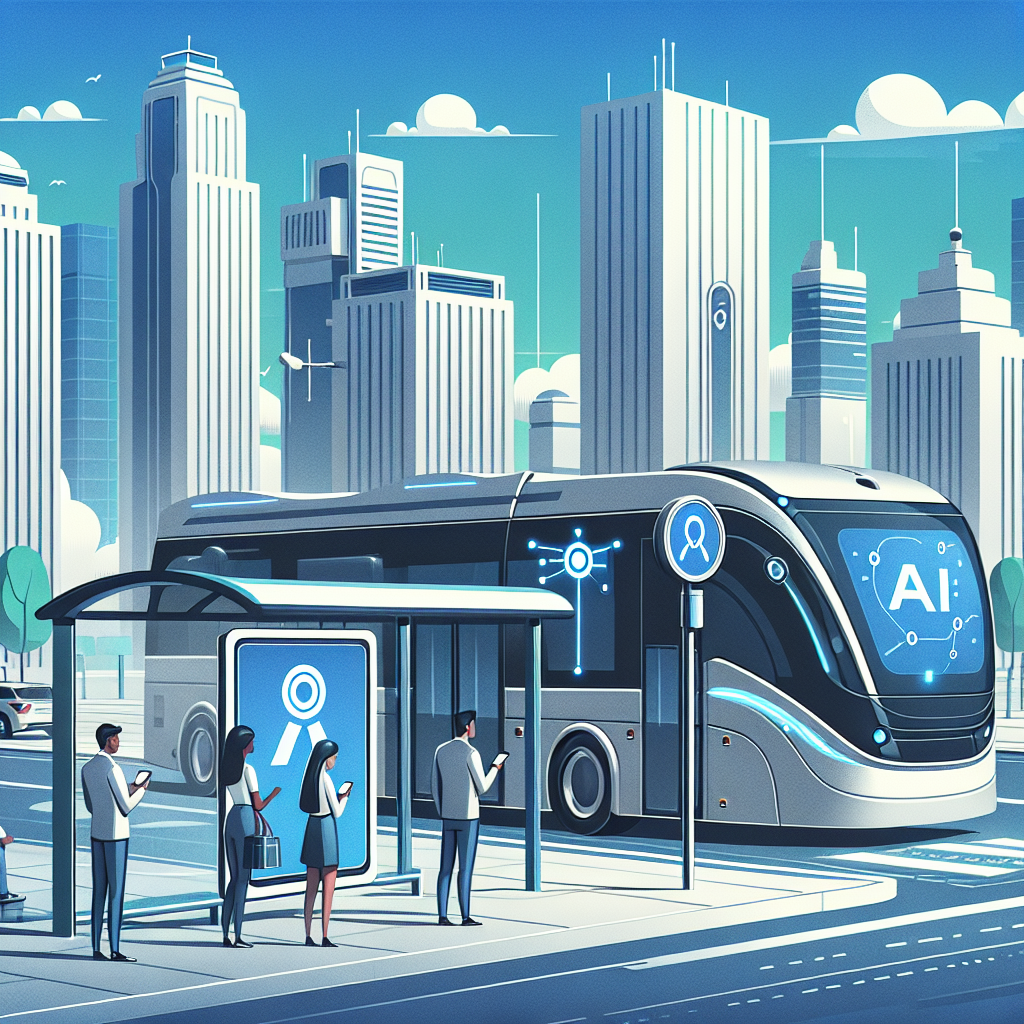Artificial intelligence (AI) has revolutionized many industries, including public transportation. By leveraging AI technology, public transportation systems can enhance efficiency and accessibility for commuters, leading to a more seamless and user-friendly experience for all. In this article, we will explore the ways in which AI is transforming the public transportation sector and how it is benefiting both passengers and operators.
Enhancing Efficiency with AI
One of the key benefits of AI in public transportation is its ability to enhance efficiency. AI algorithms can analyze data in real-time to optimize routes, schedules, and capacity management. This results in reduced wait times, improved on-time performance, and better utilization of resources.
For example, AI-powered predictive analytics can help operators anticipate demand and adjust services accordingly. By analyzing historical data on passenger volume and traffic patterns, AI can predict peak travel times and adjust schedules to meet the increased demand. This ensures that passengers have access to reliable and timely transportation services, ultimately improving the overall commuting experience.
AI can also help operators optimize routes by analyzing traffic patterns, weather conditions, and other variables in real-time. By adjusting routes dynamically, operators can reduce congestion, minimize delays, and improve overall service efficiency. This not only benefits passengers by providing faster and more reliable transportation options but also helps operators reduce costs and improve their bottom line.
Another way AI can enhance efficiency in public transportation is through predictive maintenance. By analyzing data from sensors and monitoring equipment on vehicles and infrastructure, AI can predict when maintenance is needed before a breakdown occurs. This proactive approach can help prevent service disruptions, reduce downtime, and extend the lifespan of equipment, ultimately saving operators time and money.
Improving Accessibility with AI
In addition to enhancing efficiency, AI is also improving accessibility in public transportation. By leveraging AI technology, operators can provide more personalized and inclusive services for passengers with disabilities or special needs.
For example, AI-powered chatbots and virtual assistants can help passengers with disabilities navigate the public transportation system more easily. These virtual assistants can provide real-time information on accessible routes, schedule updates, and other relevant information, helping passengers plan their trips more efficiently. By offering personalized assistance, AI technology can empower passengers with disabilities to use public transportation with greater confidence and independence.
AI can also improve accessibility by optimizing services for passengers with special needs. For example, AI algorithms can analyze data on passenger demographics and preferences to tailor services to meet the specific needs of different user groups. This could include providing priority seating for passengers with disabilities, offering audio announcements for visually impaired passengers, or implementing other accommodations to enhance accessibility for all passengers.
By incorporating AI technology into public transportation systems, operators can create a more inclusive and user-friendly experience for passengers of all abilities. This not only improves the overall quality of service but also helps promote equity and social inclusion in the transportation sector.
FAQs
Q: How is AI being used to improve safety in public transportation?
A: AI technology is being used to enhance safety in public transportation in a variety of ways. For example, AI-powered sensors and cameras can monitor traffic conditions and detect potential hazards in real-time, allowing operators to take proactive measures to prevent accidents. AI algorithms can also analyze data on vehicle performance and driver behavior to identify potential safety risks and provide recommendations for improvement.
Q: Can AI help reduce emissions and promote sustainability in public transportation?
A: Yes, AI can help reduce emissions and promote sustainability in public transportation by optimizing routes, schedules, and vehicle performance. By analyzing data on traffic patterns, passenger demand, and other variables, AI algorithms can help operators reduce fuel consumption, minimize idle time, and improve overall fleet efficiency. This not only reduces greenhouse gas emissions but also helps operators save money on fuel costs and maintenance.
Q: How is AI being used to enhance customer service in public transportation?
A: AI technology is being used to enhance customer service in public transportation by providing personalized assistance and real-time information to passengers. AI-powered chatbots and virtual assistants can help passengers plan their trips, answer questions, and provide updates on service disruptions. By offering a more interactive and user-friendly experience, AI technology can improve customer satisfaction and loyalty in the public transportation sector.
In conclusion, AI is transforming the public transportation sector by enhancing efficiency and accessibility for passengers and operators alike. By leveraging AI technology, public transportation systems can improve service quality, reduce costs, and promote social inclusion. As AI continues to evolve, we can expect to see even more innovations in the public transportation sector, ultimately leading to a more sustainable, efficient, and user-friendly transportation experience for all.

